Premium Only Content
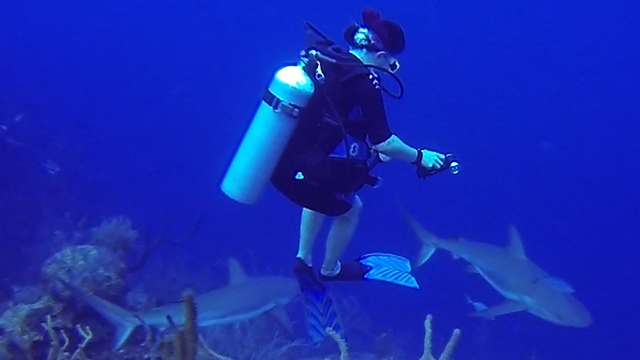
Divers put in danger when surrounded by hungry sharks
Caribbean Reef Sharks grow to an impressive 9 feet in length and can weigh almost 300lbs. They are all muscle and teeth with a brain that thinks of little, aside from food. Although they are not known to attack humans often, it is unnerving to have them suddenly appear and surround you while you are 70 feet below the surface.
Reef sharks are opportunistic feeders and they simply do not regard humans as food, but their curiosity about scuba divers is definitely food driven. Spearing fish and feeding sharks has become a more common practice among divers and guides looking to create an unforgettable experience. It brings the sharks close for a view or for photographs that can be very exhilarating. This practice is risky, however, and divers are well advised to never intentionally feed a shark.
Divers in this group are on a wall dive on a nearly vertical section of coral reef near the world famous Blue Hole. They entered the water as a group and let the current carry them for what was agreed upon as a 45 minute dive along one of the most picturesque sites in Belize. Their boat will be waiting at a predetermined location to pick them up at the end.
What was not planned for was that the group ahead of them, from another boat, was spearing Lionfish.
Lionfish are an invasive species that divers spear and kill in an effort to remove them from the reefs. They are voracious eaters and have no predators in the Atlantic. Left alone, they are extremely destructive to an ecosystem.
The practice of feeding Lionfish to hungry sharks is a very dangerous one, however. These sharks are actually swimming around divers, in between, and under them, looking for a meal. Their behavior has completely changed at the smell of blood and in response to other sharks that have sensed the chance for food. This change greatly increases the risk of aggression toward humans, as well as the risk of a bite. Stimulating the feeding response in such a potentially dangerous creature is simply looking for trouble.
It was a surprise in this case to see such a large group of sharks appear so close. These divers know that their best approach is to move closer together, stay calm, and stay vertical. Going to the surface will actually place them at greater risk, as the sharks are more likely to mistake their silhouette above as food.
When the dive was over and the divers waited at the surface, the group ahead was talking about spearing fish and feeding the sharks. They had obviously decided to accept the risk, but they had placed others at risk unknowingly. They are contributing to learned behavior that could have disastrous consequences for both people and sharks.
Wild creatures, especially predators, should always be treated with respect and caution. Most shark bites are a direct result of foolish behavior.
-
 1:57
1:57
WildCreatures
16 days ago $7.12 earnedCurious wild deer comes to share a snack with man in forest
46.1K15 -
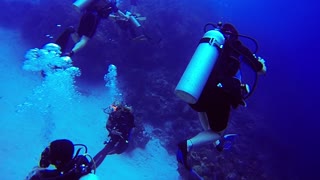 2:28
2:28
WildCreatures
9 years ago $0.17 earnedSurrounded By Sharks
1.44K -
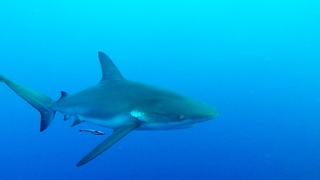 1:14
1:14
WildCreatures
7 years ago $182.30 earnedScuba Divers In Danger When Large Sharks Circle Them
49.1K -
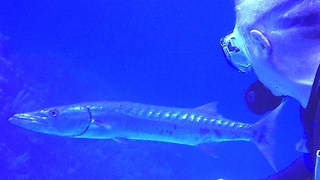 0:52
0:52
WildCreatures
8 years ago $1.23 earnedMenacing looking barracudas circle scuba divers
1.24K -
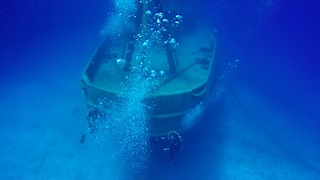 2:05
2:05
cdngreenwaterdiver
7 years ago $0.55 earnedDivers explore Kittiwake shipwreck on Grand Cayman Island
1.11K -
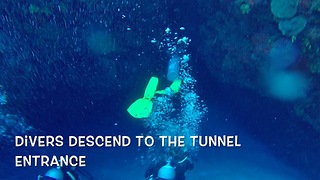 1:13
1:13
cdngreenwaterdiver
8 years ago $0.15 earnedDivers find hiding creatures on ocean floor
2.05K2 -
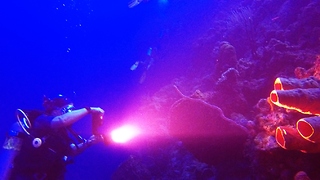 1:19
1:19
WildCreatures
8 years ago $0.25 earnedDivers explore mysterious Black Hole dive site
2.33K1 -
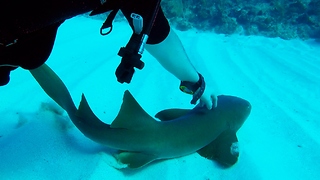 0:42
0:42
WildCreatures
8 years ago $0.07 earnedBaby shark follows divers, gets scratch on the head
17.6K2 -
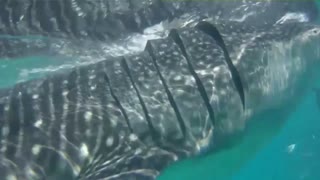 1:18
1:18
diaryofalex
9 years agoSwimming with whale sharks
1.31K -
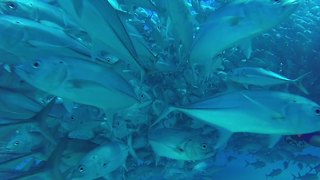 0:55
0:55
cdngreenwaterdiver
8 years ago $1.14 earnedMassive school of fish completely surround scuba divers
4.87K2